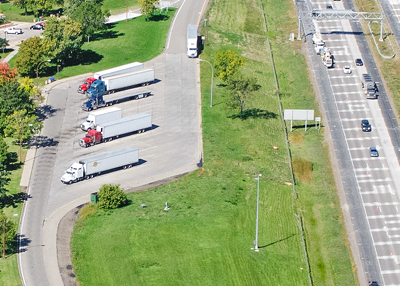
In addition, they should also anticipate long-term utilization over the next five, 10, 15, and more years with an eye toward developing and future technologies that may affect the project.Īs the saying goes, when it comes to real estate, the three most important considerations are location, location, and location.

Planners must consider not just a rest area’s initial use, but regulations governing commercialization the of the right-of-way along the Interstate System. They require restrooms and sanitary services many have restaurants and retail establishments some have recreational areas or learning centers (environmental stewardship programs) and some even have fuel and other vehicle-maintenance operations. It’s not a matter of just paving over a field and painting parking stall stripes. Of course, significant planning goes into rest-area development. State planners and their consulting engineers are preparing programs to deliver on these improvements. In response, many states are planning the creation of new or expanded rest areas to better serve both truckers and fatigued private-vehicle drivers.
#Truck rest area near me now drivers
This poses a significant safety hazard to both truck drivers, and the private-vehicle drivers traveling on those same roads. It’s not uncommon to see highway rest stops overwhelmed with trucks, and miles of freeway shoulders adjacent to rest areas lined with trucks. On too many highways, both state and federal, there aren’t enough rest areas to serve the needs of high-volume truck traffic mandated to take a break.

In the vital quest to save lives, an obvious shortcoming emerged. Also, drivers may be on duty for up to 14 hours - with a mandatory 30-minute break by their eighth hour - following 10 hours off duty. They include limits of 60 hours of driving over a seven consecutive-day period, or 70 hours over eight days. State regulations vary, but the federal government established stringent rules. In this regard, the most important policy is limiting the length of time drivers can legally drive before taking a rest. In response to this significant daily threat, state and federal transportation administrators and policymakers took action to reduce tired driving, particularly among truck drivers. The Centers for Disease Control and Prevention estimates that up to 6,000 fatal crashes each year are caused by drowsy drivers. According to the National Highway Traffic Safety Administration, tired drivers are responsible for over 70,000 crashes a year, causing nearly 45,000 injuries.
#Truck rest area near me now driver
It’s unavoidable - approximately one in every five fatal vehicular crashes involve driver fatigue a third of crashes involving a drowsy driver result in injuries. Throughout the state, MoDOT currently maintains seven welcome centers, 14 rest areas and 24 truck-only parking sites along seven interstates.ĭetailed information about the rest areas modification project is available here.Anyone spending significant time driving on America’s highways sees firsthand the dangers of fatigued driving.

In addition, of the 141 sites near interstates in Missouri, 87 are at or above capacity during peak hours, while 23 are between 80-100% full, said MoDOT. The MoDOT news release stated that commercial vehicles account for approximately 35% of the annual daily traffic on Missouri interstates. The rest areas will be converted into truck parking.įor more information about the upcoming closures: /dAn0rW0VhT The southbound rest areas on Interstate 29 in Platte County and I-35 in Clinton County will be closing permanently on March 16. “By converting the rest areas to truck parking, we’re able to help meet the needs of commercial vehicles while decreasing the costs associated in the renovation and upkeep of traditional rest areas.”Įmery, Sapp & Sons has been contracted by MoDOT on the $3.8 million project which will include the removal of the rest area buildings and installation of vault toilets, in addition to the truck parking spaces. “When truckers can’t find parking off the road, they resort to parking on the interstate access ramps and this creates a safety hazard,” Marty Liles, MoDOT northwest district engineer, said in a news release. No vehicles will be allowed to park at the facilities until they reopen.Īccording to MoDOT, the project is expected to be completed by the end of October 2023. On March 16, the southbound Platte County Interstate 29 rest area in Dearborn, Mo., and the Clinton County Interstate 35 rest area in Clinton, Mo., will be closed to all motorists as work on the facilities begins.

The Missouri Department of Transportation announced two rest areas will be permanently closed and converted to commercial vehicle parking facilities.


 0 kommentar(er)
0 kommentar(er)
